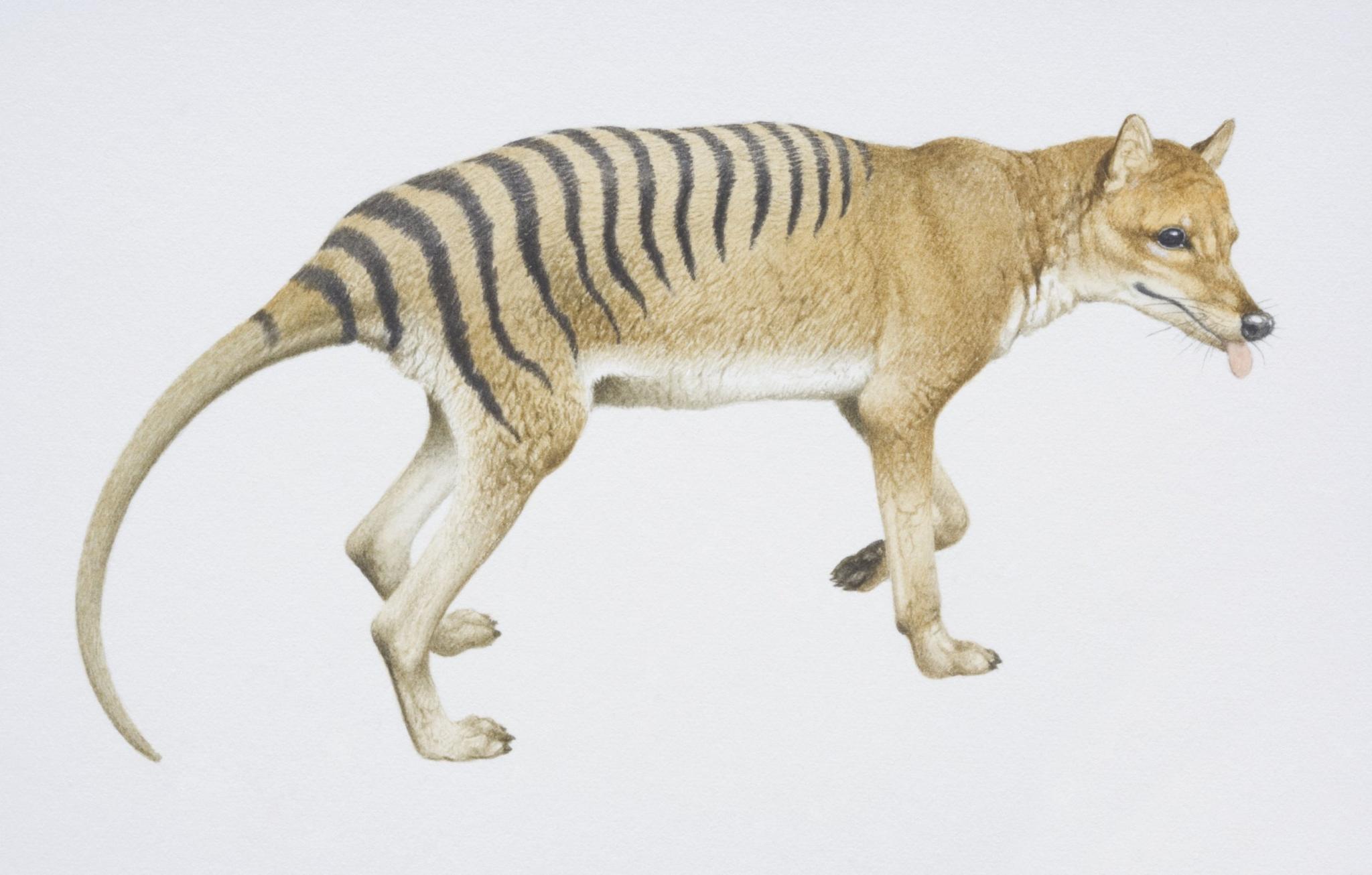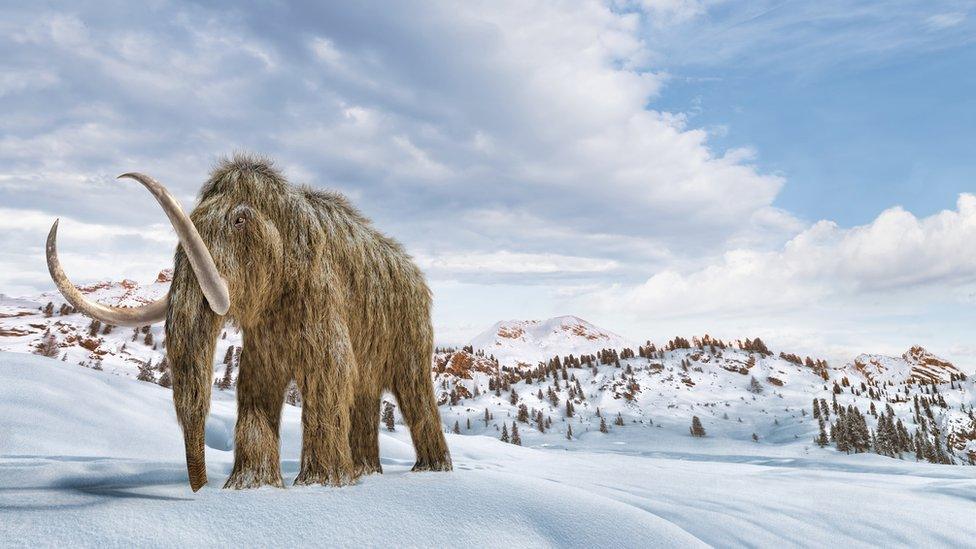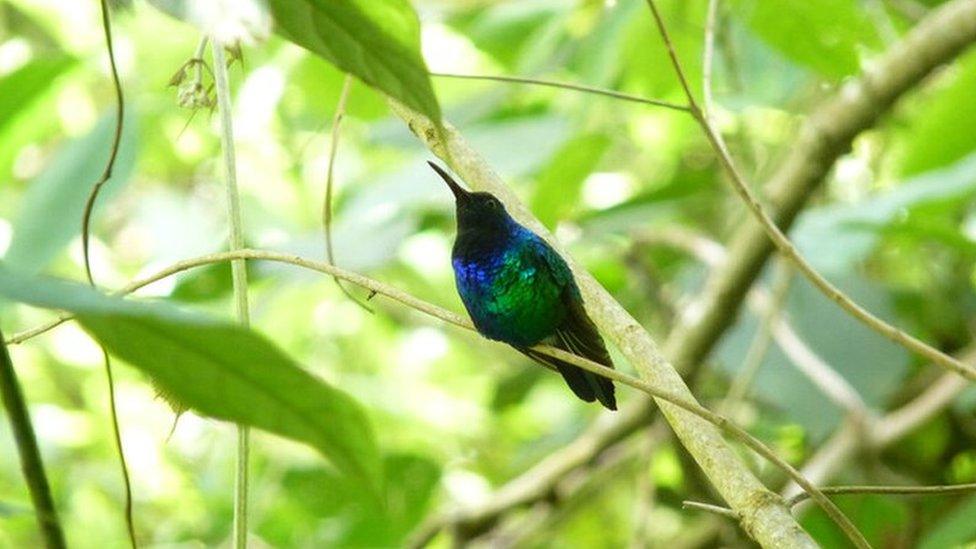Thylacine: Scientists' plan to bring extinct Tasmanian 'tiger' back to life!
- Published
- comments

The animal is known for the stripes on its back
Have you ever heard of a Tasmanian tiger? The animal, which is scientifically known as a thylacine, has been extinct since the 1930s.
However, scientists in Australia and America are starting work on a project which they hope will bring the animal back from the dead!
The team of researchers working on the Tasmanian tiger project say they think this could be done using what's known as stem cells and gene-editing technology.
The Australian and US scientists plan to take stem cells from a living species with similar DNA to the thylacine, and then use gene-editing technology to "bring back" the extinct species - or an extremely close version of it.
What is DNA?
DNA is information inside the cells of the body that makes people who they are - including things like eye colour, hair colour and height.
If successful, it could see the return of the animal to the wild in 10 years' time and it would also be quite a scientific achievement for the team.
"I now believe that in 10 years' time we could have our first living baby thylacine since they were hunted to extinction close to a century ago," said Professor Andrew Pask, who is leading the research from the University of Melbourne.

There have also been plans to bring back the woolly mammoth!
The population of Tasmanian tigers declined when humans arrived in Australia tens of thousands of years ago, and then later when dingoes - a species of wild dog - appeared.
Eventually, the marsupial only roamed free on the island of Tasmania, and was ultimately hunted to extinction.
The last captive Tasmanian tiger died at Hobart Zoo in 1936.
The thylacine earned the nickname of the Tasmanian tiger for the stripes that ran along its back - but it wasn't actually a tiger!
The animal was actually what's known as a marsupial, which is the type of Australian mammal that raises its young in a pouch.
Both male and female Tasmanian tigers had pouches. The female pouch was used to look after their young in a similar way to kangaroos, whilst the male pouches helped protect their private parts.
Tasmanian tigers were quite similar to wolves or dogs in appearance, with short, sandy or yellowish fur, short pointy ears, a powerful jaw and a long stiff tail.
The thylacine was carnivorous, which means it ate other animals including wallabies and kangaroos.

The thylacine became extinct back in 1936
Despite plans to revive the predator, not everyone is convinced this is possible. Some experts suggest de-extinction is just science fiction.
"De-extinction is a fairytale science," Associate Professor Jeremy Austin from the Australian Centre for Ancient DNA told the Sydney Morning Herald, adding that the project is "more about media attention for the scientists and less about doing serious science".
- Published15 September 2021

- Published7 May 2019

- Published9 August 2022

